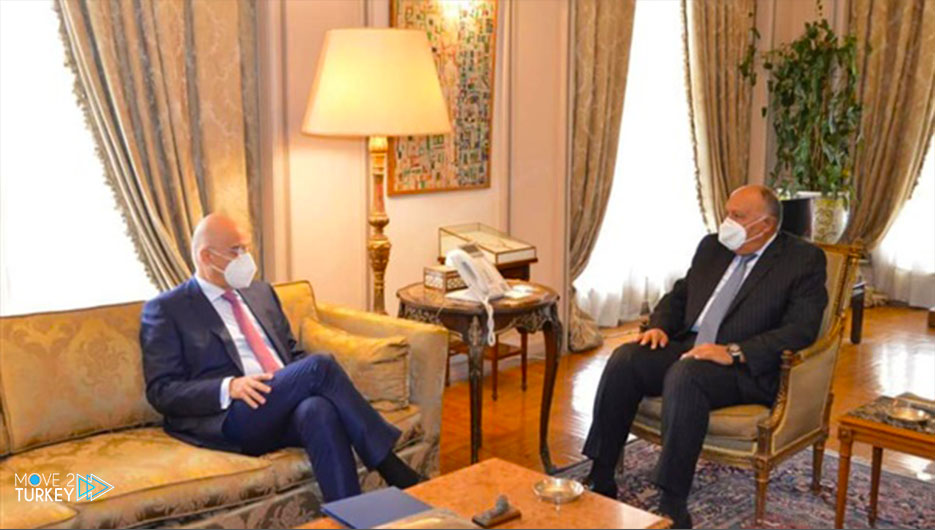
On Sunday, Egypt and Greece searched for ways to reach a comprehensive settlement to the Libyan crisis and the latest developments in the Ethiopian “Renaissance” dam file.
This came during a meeting between Egyptian Foreign Minister Sameh Shoukry and his Greek counterpart Nikos Dendias in Cairo.
On the sidelines of an official visit the latter is conducting to Egypt (an unlimited period), according to a statement by the Egyptian Foreign Ministry.
The meeting dealt with “supporting access to a comprehensive settlement of the crisis in Libya, the latest developments in the Ethiopian Renaissance Dam file, and the overall situation in the eastern Mediterranean region.”
Shoukry reviewed his country’s vision regarding the current regional developments and ways to resolve the various crises throughout the region.
-Advertisement-
In addition to the efforts aimed at creating the appropriate climate for the establishment of security and stability”.
The two sides also discussed “enhancing cooperation, coordination and mutual benefit from the experiences of the two countries in confronting the spread of the Coronavirus”.
In addition to the keenness to reduce its social and economic repercussions” according to the same statement.
Recently, the Libyan crisis witnessed a breakthrough after years of armed conflict, after the parties managed to ratify a unified transitional authority.
Abd al-Hamid al-Dabaiba and its Presidential Council are headed by Muhammad al-Manfi, and the authority assumed its duties on March 16.
Negotiations for the “Renaissance” dam between Cairo, Khartoum and Addis Ababa are stalled.
Especially in light of Ethiopia’s insistence to proceed with the second filling of the dam during the next July and August.
Meanwhile, Egypt and Sudan adhere to first reaching a tripartite agreement to preserve their water facilities, and to ensure the continued flow of their annual share of the Nile water.
It is 55.5 billion cubic meters and 18.5 billion cubic meters, respectively.






















